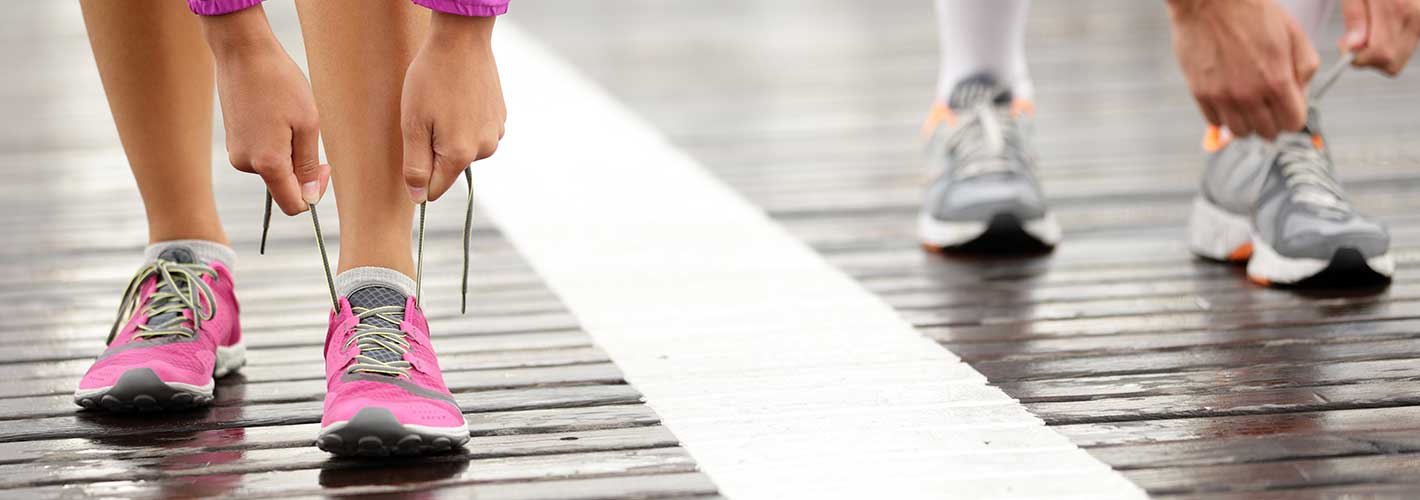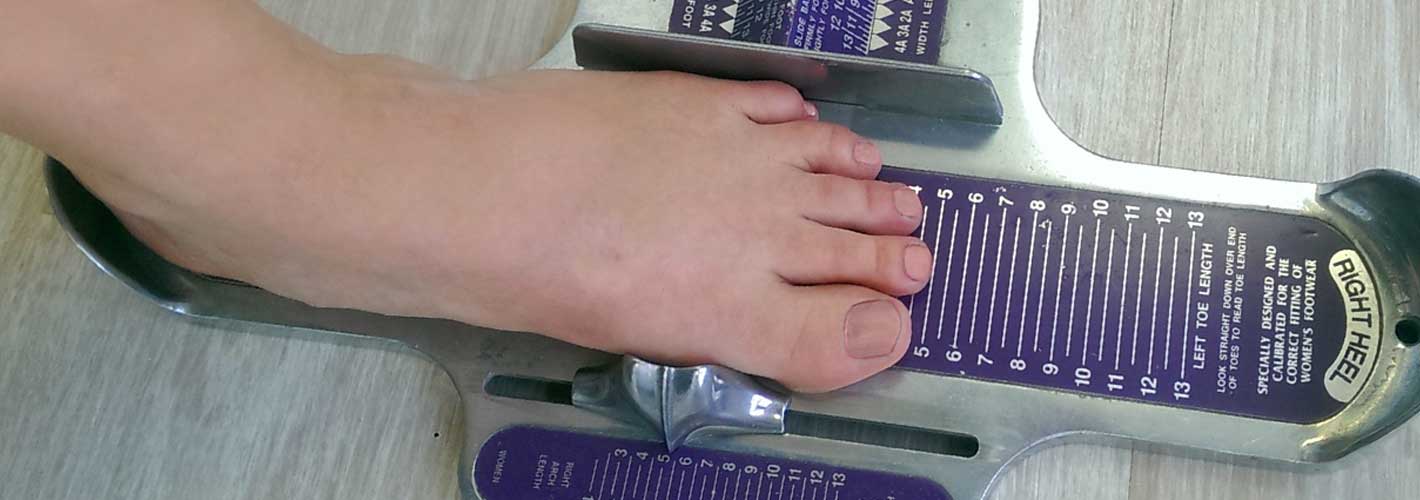Throughout life, even adult feet continue to change in size and shape. BioPed’s shoe fitting guidelines and lacing hacks will help keep you comfortable at any stage of life. Have you measured your feet recently? Contrary to popular belief, our shoe size continues to change as we age! Shoe size is not just a measure of the length of our foot, but also of the width at the widest point. Weight gain or loss, pregnancy, injury, surgery and the effects of aging are all common causes for changes in the length and width of our feet. If you haven’t had your feet measured in the last 12 months, you may be wearing the wrong size. According to the study conducted by the College of Podiatry, of 2000 adults surveyed, one-third of men and nearly half of women admitted to purchasing shoes that didn’t exactly fit. Wearing the wrong size length or width can lead to negative foot health outcomes, such as blisters, pain, calluses or corns, bunions, and so on. Follow these tips from our shoe fitting guidelines to find the most comfortable fit.
Picking the correct shoe size isn’t always easy!
When buying a size medium T-Shirt made by one brand and a size medium made by another, do you find they fit the same? Chances are, they do not. Purchasing footwear is no different. Companies as well as countries often utilize different sizing systems and manufacturing processes which leads to a wide variation in sizing. The only way to know the most appropriate size of shoe for you is to try it on.

Does wearing the wrong shoe size have an impact on my feet?
An incorrect length or width of a shoe can lead to poor foot health outcomes. For example, ingrown toenails, hammertoes, bunions and bunionettes (a bunion of the 5th toe) are frequently caused by improperly fitting shoes and/or genetics or mechanics. Shoes that are too long or too wide will cause your foot to move excessively in the shoe. This movement will lead to blisters and callous build-up as your foot attempts to protect itself when your foot slides in the shoe, creating friction. Your muscles will also spend more effort trying to stabilize your foot leading to tired feet. Muscle fatigue and sore joints in the foot and ankle can often be attributed to wearing the wrong shoes.
To ensure a properly fitting shoe, follow bioped’s best fit process:

- Have a Foot Clinician, such as a Canadian Certified Pedorthist, measure both of your feet utilizing a Brannock Device. This will be done both seated and standing and will give your clinician an estimate of the length and width of shoe most appropriate for your feet.
- Where possible, remove the lining of the shoes and stand on them with both feet. Ensure the edges of your feet fit comfortably with-in the borders of the insole. Toes, heels, Bunions and bunionettes should not protrude past the edges of the lining.
- The thumb test – With the shoe on the longest foot, check to ensure there is a half to full thumb’s width from the end of your longest toe to the end of the shoe or sandal.
- The toe wiggle test – A shoe is the correct width and depth for you when you have enough space to wiggle your toes, but not so much so that a crease forms, or your foot slides from side to side.
By following these Shoe Fitting Guidelines above, you can ensure that your new shoes have the best fit possible. Please visit your local BioPed Clinic to be fit by an EXPERT!
How to lace your shoes to prevent blisters behind your heel
There are a number of lacing hacks but today, we will focus on a lacing technique that helps prevent blisters behind your heel. This is especially helpful if you have narrow heels and your foot slips out of your shoe slightly as you walk.
By following these Shoe Fitting Guidelines and lacing hack, you can ensure that your new shoes have the best fit possible. Please visit your local BioPed Clinic to be fit by a trained professional!




